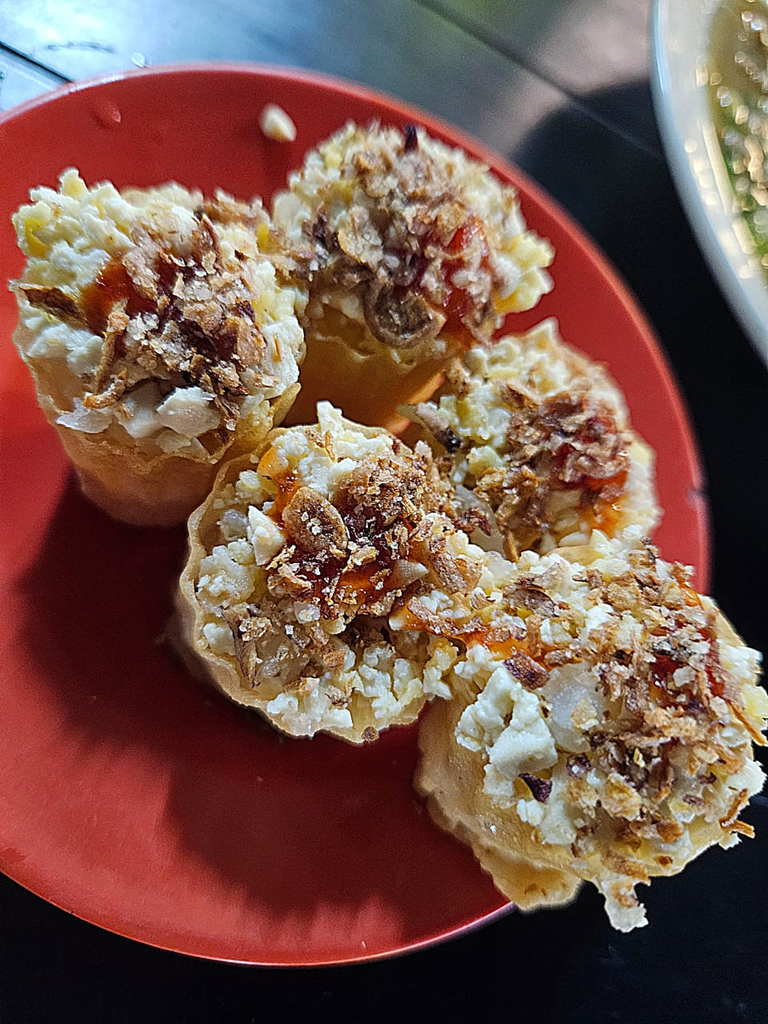Trying out new foodcourt.. 33 best foodhub... searching for food is an adventure in Penang

Hong Kong Chee Cheong Fun (腸粉), or rice noodle rolls, is a beloved dish that originated in southern China and has become a staple in Hong Kong's dim sum culture. It consists of thin, silky-smooth rice noodles rolled up and filled with a variety of ingredients. The name "Chee Cheong Fun" translates to "pig intestine noodles," though the dish itself doesn't contain pork intestines; it simply resembles them in shape.
Texture: The hallmark of Hong Kong Chee Cheong Fun is its delicate, translucent, and silky texture. The rice rolls should be thin and soft yet sturdy enough to hold fillings without breaking apart.
Filling Options: Traditional versions often include shrimp (蝦腸), barbecued pork (叉燒腸), or beef (牛腸). Some modern versions feature creative fillings like scallops, mushrooms, or even vegetarian options with vegetables or tofu.
Sauce: The rolls are typically served with a light soy sauce that complements the flavors of the fillings without overpowering them. Some variations include a sweet or sesame sauce, and chili oil may be added for those who prefer a spicy kick.
Toppings: To enhance the flavor and texture, crispy shallots, sesame seeds, and green onions are often sprinkled on top.
Making Chee Cheong Fun requires skill and precision. A thin batter made from rice flour, water, and a bit of tapioca or corn starch is poured onto a steaming tray. Once the batter sets, fillings are added, and the noodle sheet is carefully rolled up. The freshly steamed rolls are then cut and served hot.

Lam Mee, also known as "Birthday Noodles" or "Lam Mee Suah," is a comforting and flavorful noodle dish popular in Malaysia, particularly in the states of Penang and Kuala Lumpur. The dish is often associated with celebrations, especially birthdays, as noodles symbolize longevity and good fortune in Chinese culture.
Noodles: Lam Mee typically uses yellow noodles or thick rice noodles. The noodles are soft but maintain a slightly chewy texture, perfect for absorbing the savory broth.
Broth: The heart of Lam Mee is its rich, flavorful broth. It’s usually made from a combination of chicken, pork bones, and dried shrimp, simmered for hours to develop a deep, umami flavor. The broth may be thickened slightly with cornstarch, giving it a smooth, velvety consistency.
Toppings: A variety of toppings are added to enhance the dish:
Shredded Chicken: Boiled or poached chicken, shredded into fine pieces, is a staple topping.
Shrimp: Some versions include prawns or small shrimp, adding a briny sweetness.
Fish Cake: Slices of fish cake are also common, providing a light, bouncy texture.
Egg: A hard-boiled egg, either halved or quartered, is often added for additional richness.
Choy Sum: This leafy green vegetable adds a fresh, slightly bitter contrast.
Garnishes: Fried shallots, spring onions, and coriander are sprinkled on top for aroma and crunch. Sambal chili or a dollop of spicy chili paste is usually served on the side for those who prefer an extra kick of heat.
Making Lam Mee involves preparing the broth, cooking the noodles, and assembling the toppings. The broth is the most time-consuming part, requiring the simmering of ingredients like chicken bones, dried shrimp, and vegetables to extract a deep flavor. The noodles are boiled separately and then added to the hot broth along with the toppings and garnishes just before serving.

Pai Tee, also known as “Top Hats” or “Kuih Pie Tee,” is a popular Nyonya (Peranakan) snack that’s loved for its crispy texture and delightful, colorful presentation. Originating from the Peranakan communities of Malaysia and Singapore, Pai Tee is a small, bite-sized treat consisting of crispy pastry shells filled with a savory and flavorful vegetable filling. It’s often served at festive occasions and family gatherings as a delicious appetizer or snack.
Pastry Shells: The iconic shape of Pai Tee resembles a top hat or a small cup, made from a thin, crispy batter that is deep-fried until golden brown. The shells are delicate and crispy, providing the perfect contrast to the soft, savory filling.
Filling: The filling is typically made of finely shredded vegetables, such as jicama (yam bean), carrots, and sometimes cabbage, stir-fried with garlic, shallots, and dried shrimp for added umami flavor.
Garnishes: To add freshness and texture, Pai Tee is often topped with a small piece of shrimp, a sprig of coriander, and a bit of chili for a touch of heat. Some versions also include a tiny dollop of sweet chili sauce or sambal on top for an extra kick.
Presentation: The visual appeal of Pai Tee is a big part of its charm. The crispy shells, colorful vegetable filling, and bright garnishes make for a beautiful, appetizing display.
Making Pai Tee requires precision and patience, especially when preparing the pastry shells. The batter, usually made from a mix of rice flour, wheat flour, and cornstarch, is dipped into a special mold before being fried to achieve the distinctive shape. The filling is stir-fried until the vegetables are tender but still slightly crunchy, then placed into each shell just before serving to keep the shells